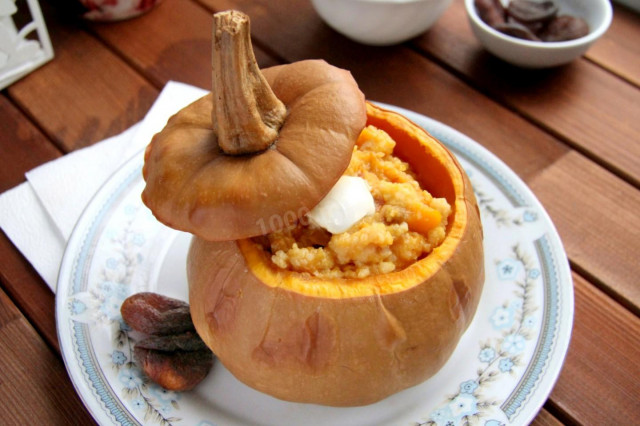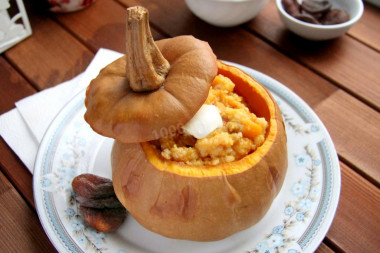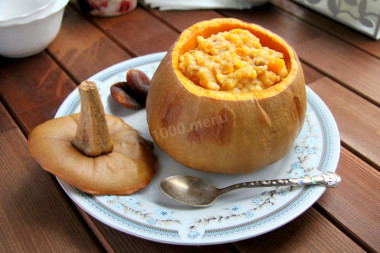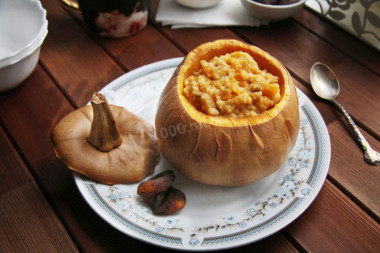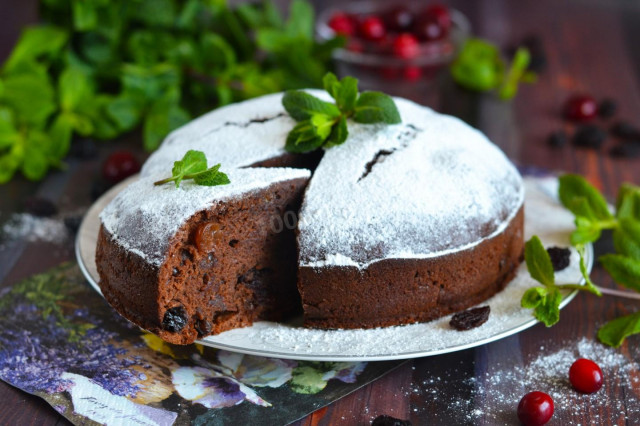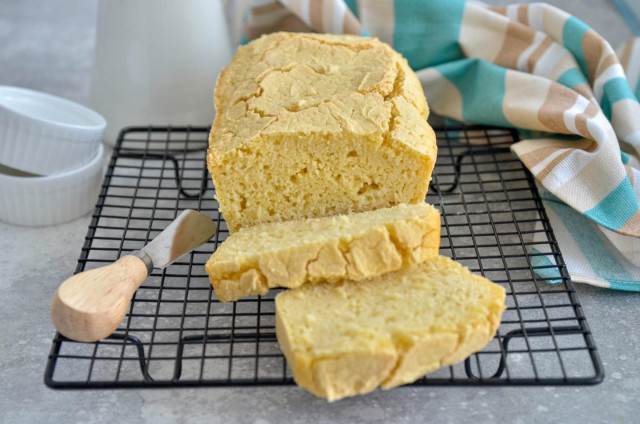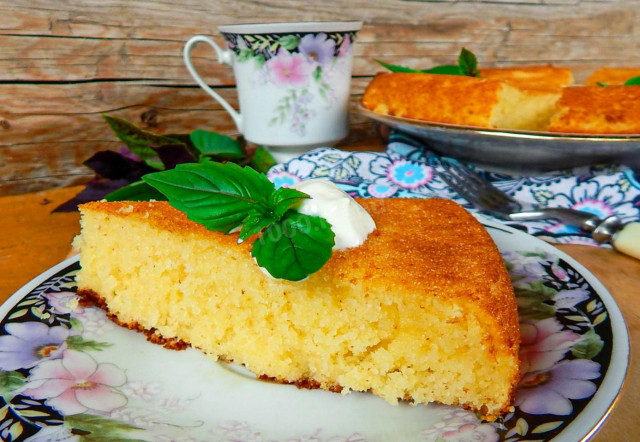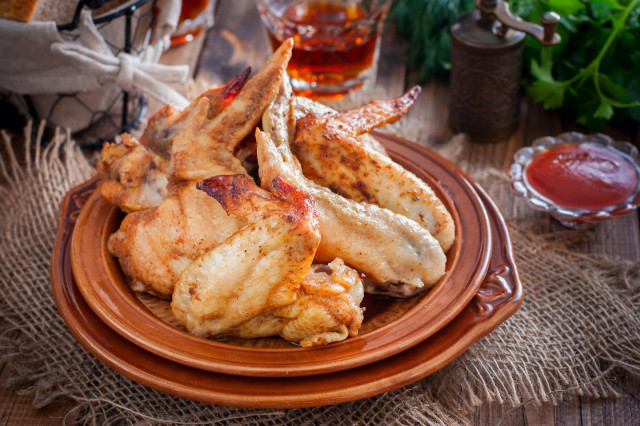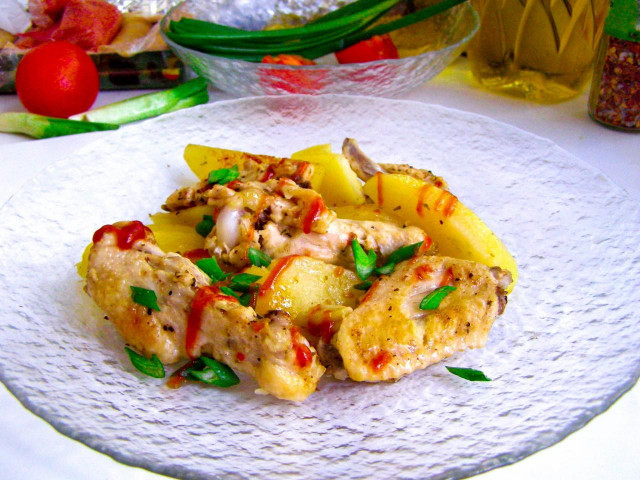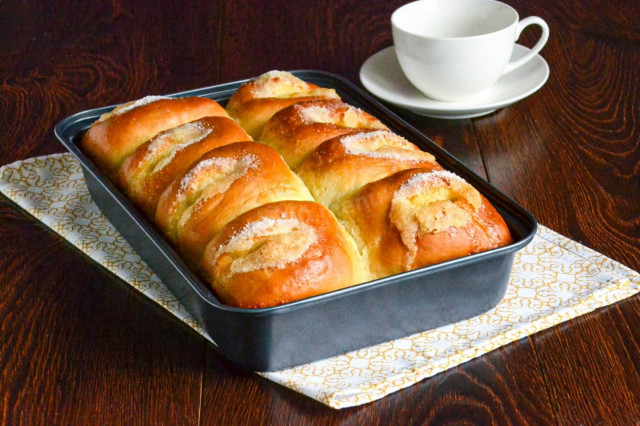Composition / ingredients
Step-by-step cooking
Step 1:
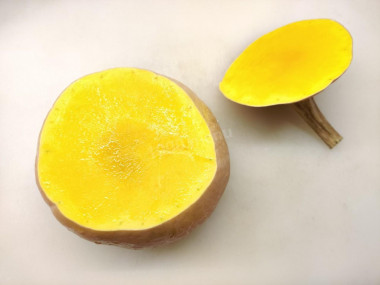
How to cook millet porridge in a pumpkin? Prepare the products. Wash a small pumpkin and use a sharp knife to cut off the lid with a stack. Since pumpkins usually have a rather tough pulp, be careful not to hurt your hands with a knife. Do not throw away the pumpkin cap.
Step 2:
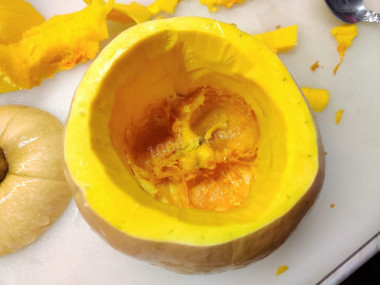
With a teaspoon, remove the inside of the pumpkin (seeds and part of the pulp). The walls should eventually remain a centimeter and a half in size.
Step 3:
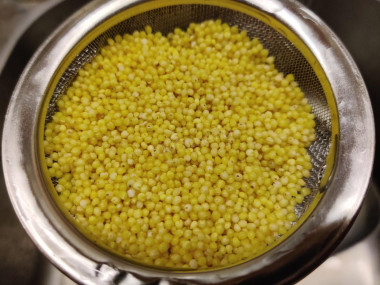
Rinse the millet groats under running water until the drained water becomes transparent. I always wash the millet in warm water in a sieve right under the tap.
Step 4:
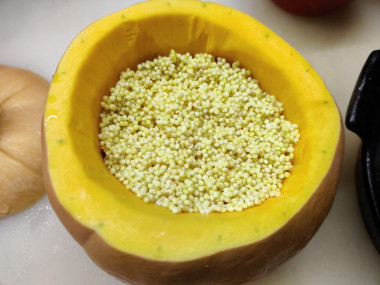
Put the washed wheat inside the pumpkin.
Step 5:
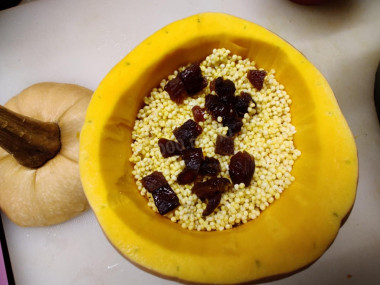
Wash dried apricots and chop them into small cubes. Put dried apricots on top of millet groats. Dried apricots can be supplemented with raisins and other dried fruits (choose not sour, otherwise the milk may curdle). If you don't like dried fruits, you can completely do without them, the porridge will still be delicious.
Step 6:
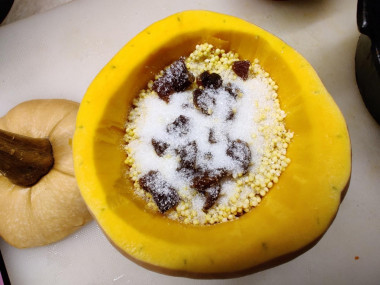
Add sugar and salt to taste. Add a pinch of vanilla. If you don't like the vanilla taste, you can remove it or replace it with something else.
Step 7:
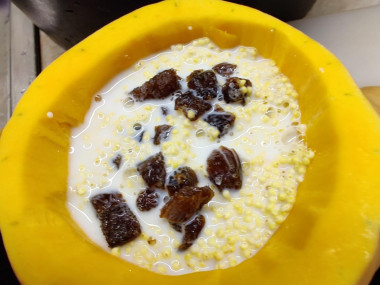
Pour milk into the pumpkin. Instead of milk, you can use water or a mixture of milk and water. And it is better to mix milk with cream.
Step 8:
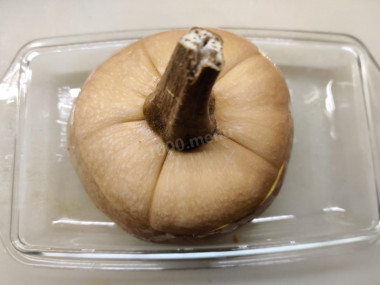
Cover the pumpkin with an improvised lid and put it in a mold with sides to bake for about 40 minutes in a preheated oven to 200 degrees. Determine the time and temperature by your oven and by the readiness of porridge and pumpkin: if they are damp after the time, I recommend reducing the temperature (to about 160 degrees, but everything is individual) and continue cooking, periodically tasting the dish until it reaches readiness.
Step 9:
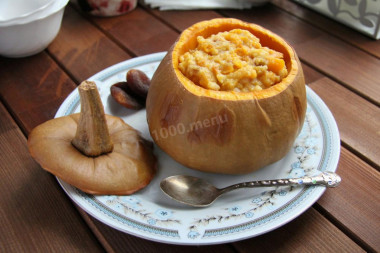
Serve the porridge with fresh butter at the rate of about five grams per serving or to your taste ..
To make the millet porridge delicious, read article about the subtleties of choosing and secrets of cooking millet groats.
The porridge turned out to be very successful. Moderately sweet and viscous, with a pleasant vanilla aroma. The millet has managed to completely boil and become soft. Dried apricots have added interesting sweet accents.
The pumpkin pulp was also fully cooked. I easily separated it from the walls of the pumpkin with a teaspoon.
The amount of pumpkin per serving can be adjusted to taste. Someone loves more, someone less. You can slightly mash the pulp with a fork and mix it with the porridge itself. And you can decorate the porridge with larger pieces.
Next time I will try to use either more fatty milk, or both milk and cream in a one-to-one ratio. The sugar turned out very well.
The dish pleased my family very much. I think that such an interesting presentation will be able to convince even the most fastidious family members who do not really like porridge and do not like pumpkin yet to try it.
Bon appetit!
Keep in mind that everyone's ovens are different. The temperature and cooking time may differ from those specified in the recipe. To make any baked dish successful, use useful information about the features of ovens !
Caloric content of the products possible in the composition of the dish
- Whole cow's milk - 68 kcal/100g
- Milk 3.5% fat content - 64 kcal/100g
- Milk 3.2% fat content - 60 kcal/100g
- Milk 1.5% fat content - 47 kcal/100g
- Concentrated milk 7.5% fat content - 140 kcal/100g
- Milk 2.5% fat content - 54 kcal/100g
- Pumpkin - 29 kcal/100g
- Millet groats - 335 kcal/100g
- Granulated sugar - 398 kcal/100g
- Sugar - 398 kcal/100g
- Butter 82% - 734 kcal/100g
- Amateur unsalted butter - 709 kcal/100g
- Unsalted peasant butter - 661 kcal/100g
- Peasant salted butter - 652 kcal/100g
- Melted butter - 869 kcal/100g
- Dried apricots - 215 kcal/100g
- Uryuk - 290 kcal/100g
- Dried peaches - 254 kcal/100g
- Salt - 0 kcal/100g
- Vanillin - 288 kcal/100g

